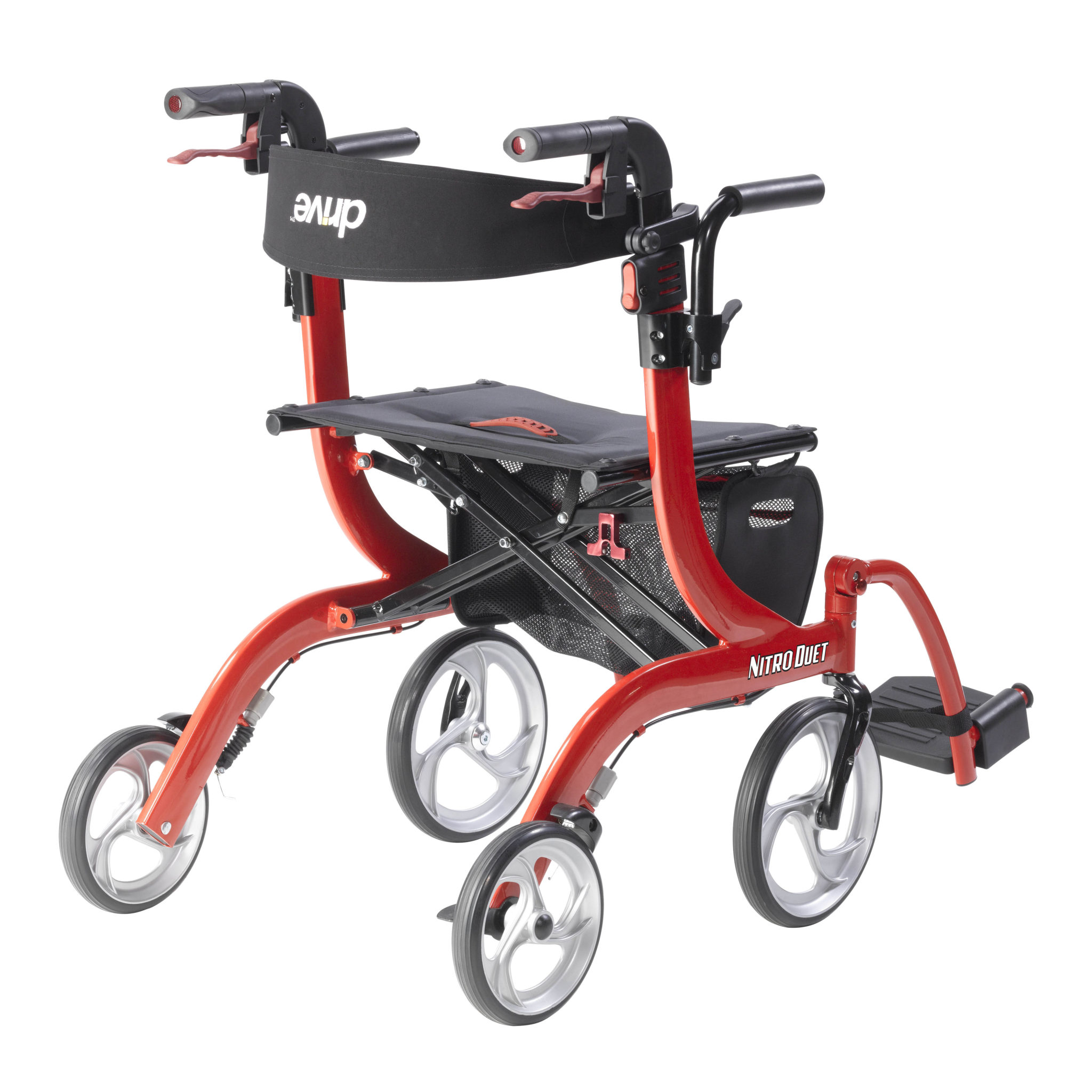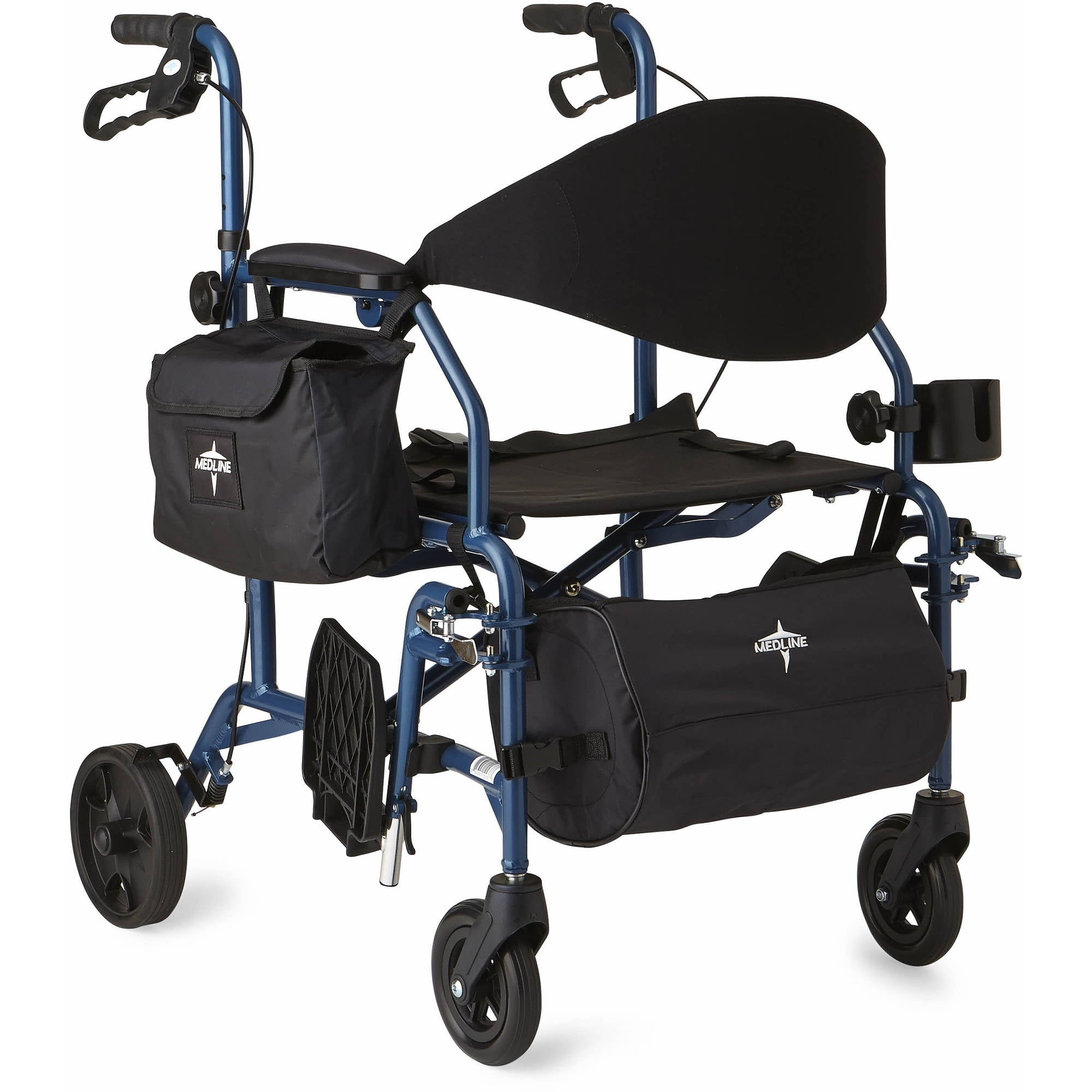Top Walker and Transport Chair Combinations: Best Walker Transport Chair Combination

A twilight settles on the journey of mobility, each step a fading echo of youthful strides. These combined walker and transport chair systems offer a glimmer of hope, a bridge between independence and the gentle surrender to age’s embrace. They are not merely devices, but extensions of the will, whispering promises of continued exploration, even as the path grows less certain.
Top Five Walker and Transport Chair Combinations
Choosing the right combination can feel like navigating a labyrinth, each path promising ease but potentially leading to disappointment. The following table presents five popular options, highlighting their strengths and weaknesses, much like charting a star-strewn sky in search of the most radiant constellations.
| Brand | Model | Weight Capacity | Folding Mechanism |
|---|---|---|---|
| Drive Medical | Scout Rollator Walker with Seat | 300 lbs | Quick-release |
| Medline | Lightweight Transport Chair with Walker | 300 lbs | Standard folding |
| Nova Medical | Folding Walker with Seat and Transport Chair | 250 lbs | Quick-release |
| Carex | Heavy-Duty Rolling Walker with Seat | 350 lbs | Standard folding |
| Hugo Mobility | Multi-function Walker with Seat | 300 lbs | Quick-release |
Comparison of Top Three Combinations, Best walker transport chair combination
The choices, though seemingly plentiful, often narrow down to a few favored companions. Here, we compare three leading contenders, weighing their merits and flaws like balancing stones on a precarious peak.
- Drive Medical Scout and Medline Lightweight: Both offer robust weight capacities and relatively easy folding mechanisms. User reviews praise their maneuverability, though some note that the Medline model might feel slightly less sturdy. Expert opinions tend to favor the Drive Medical Scout for its superior comfort and ease of use.
- Nova Medical Folding Walker and Drive Medical Scout: The Nova model, while lighter, has a lower weight capacity, making it unsuitable for heavier users. The Drive Medical Scout, in contrast, provides a more reliable platform for heavier individuals. User reviews highlight the superior folding mechanism of the Drive Medical Scout, though both are relatively straightforward.
- Medline Lightweight and Carex Heavy-Duty: The Carex model stands out with its higher weight capacity, appealing to those needing extra support. However, it often scores lower in maneuverability compared to the Medline Lightweight, based on both user and expert feedback. The Medline model’s lighter weight offers greater portability, albeit at the cost of reduced weight capacity.
Benefits and Drawbacks of Combined Walker and Transport Chair Systems
The decision to embrace a combined system is a personal one, a careful weighing of convenience against potential compromises. This duality, like the ebb and flow of tides, presents both advantages and disadvantages.
- Benefits: Convenience and space-saving are primary advantages. A combined system eliminates the need for two separate devices, simplifying storage and transportation. The cost-effectiveness of a single purchase is also a significant factor.
- Drawbacks: Combined systems may lack the specialized features and performance of dedicated walkers or transport chairs. They might be heavier or less maneuverable than a dedicated walker, and the transport chair function may be less comfortable or supportive than a dedicated transport chair. Individual needs must be carefully considered.
Maintenance and Care of Combined Walker and Transport Chairs

The slow, deliberate dance of aging often finds its rhythm in the sturdy frame of a walker, a silent companion on life’s winding path. Yet, even the most steadfast support requires tender care, a gentle acknowledgment of its unwavering service. Neglecting the maintenance of a combined walker and transport chair can lead to unforeseen breakdowns, compromising both mobility and safety. Regular care ensures these vital aids remain reliable partners, extending their lifespan and preserving their ability to offer comfort and independence.
Best walker transport chair combination – Proper maintenance and cleaning are crucial for extending the life of your combined walker and transport chair and ensuring your safety. A well-maintained chair provides reliable support and reduces the risk of accidents. This process is straightforward but requires consistent attention to detail.
Cleaning Procedures
Cleaning your combined walker and transport chair is a simple yet essential step in maintaining its functionality and hygiene. A regular cleaning schedule prevents the accumulation of dirt, grime, and potential contaminants. This, in turn, promotes longevity and enhances the user’s comfort and well-being.
- Begin by wiping down all surfaces with a damp cloth. Use a mild soap solution if necessary, focusing on areas prone to grime accumulation such as the handles, seat, and wheels.
- Rinse the cloth and wipe down all surfaces again to remove any soap residue. Ensure the chair is completely dry before storage.
- Inspect all joints and moving parts for any signs of wear and tear. Tighten any loose screws or bolts.
- Check the brakes regularly to ensure they are functioning correctly and smoothly. Lubricate as needed, following the manufacturer’s instructions.
- Inspect the wheels for wear and tear. Replace worn or damaged wheels as needed to maintain optimal mobility and safety.
- Periodically, thoroughly clean the chair using a disinfectant suitable for use on medical equipment. This will help prevent the spread of germs and bacteria.
Troubleshooting Common Problems
Even with diligent care, occasional problems can arise with combined walker and transport chairs. Recognizing and addressing these issues promptly can prevent further damage and ensure continued safe operation. A proactive approach to maintenance will greatly minimize downtime and maintain the reliability of your essential mobility aid.
| Problem | Cause | Solution |
|---|---|---|
| Squeaking brakes | Lack of lubrication or brake pad wear | Apply a suitable lubricant to the brake mechanism or replace worn brake pads. |
| Wheels not rotating smoothly | Dirt, debris, or damaged bearings | Clean the wheels and bearings. If the problem persists, replace the bearings or wheels. |
| Loose or wobbly components | Loose screws or bolts | Tighten all screws and bolts to secure all components. |
| Brake failure | Worn brake pads or a malfunctioning brake mechanism | Replace worn brake pads or seek professional repair for more serious mechanical issues. |
| Torn or damaged fabric | Excessive wear and tear or accidental damage | Repair the fabric or, if necessary, replace the seat cushion or cover. |
